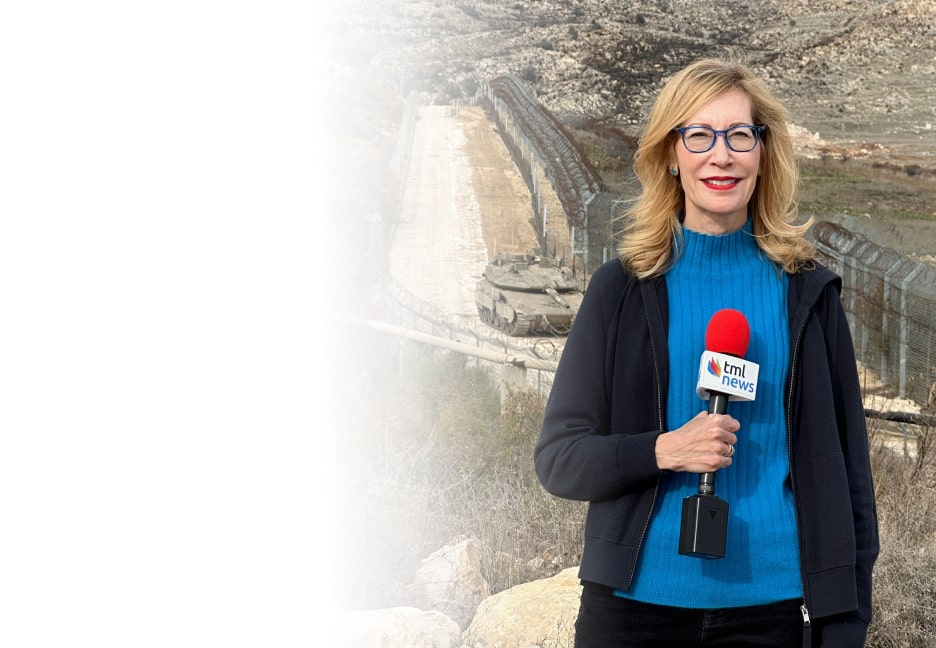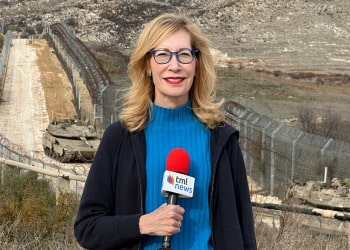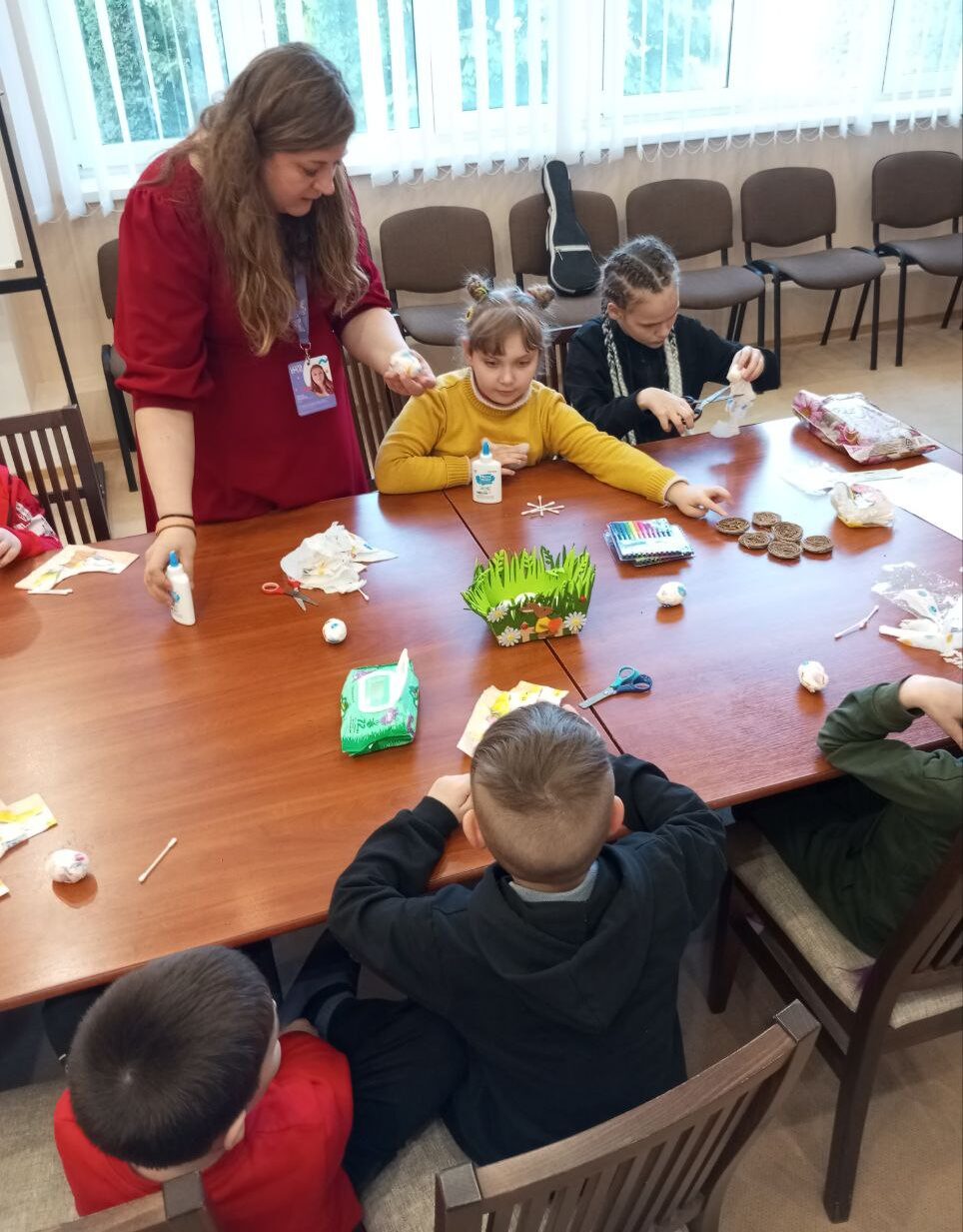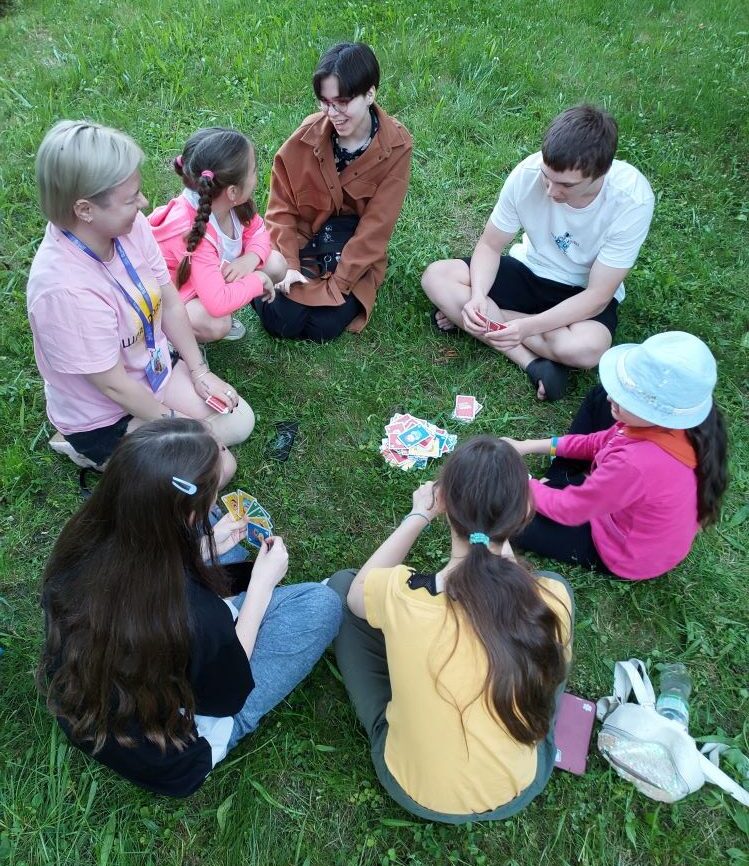Since the outbreak of the war in 2022, nearly 20,000 Ukrainian children have been forcibly taken to Russia or Russian-occupied territories without the consent of their families, Ukrainian officials say. Independent research, including research by Yale University, suggests a policy of systemic deportation of Ukrainian youth.
The harrowing consequences of that policy became clear in January 2024, when an 18-year-old Ukrainian who had been sent to a foster family in Russia took his own life. Shortly before his death, he sent a voice message to his friends expressing his despair over the relocation.
Ukraine says these actions meet the UN’s definition of genocide and last year, the International Criminal Court issued arrest warrants for Russian President Vladimir Putin and his children’s rights commissioner, Maria Lvova-Belova, accusing them of unlawfully deporting Ukrainian children.
Russia denies these allegations. Lvova-Belova has acknowledged that 730,000 Ukrainian children fled Ukraine for Russia since the start of the war but said that most of them came with their families. She said that Russia had taken about 2,000 children from Ukrainian orphanages, but she did not mention other allegations of widespread forced displacement.
Ukrainian human rights advocates who spoke to The Media Line described a harrowing, calculated effort to undermine Ukraine’s future through the use of its youngest and most vulnerable citizens. They noted that the true extent of the abductions likely surpasses the 20,000 figure.
The Fate of Ukraine’s Abducted Children
Aksana Filipishyna, an analyst with the Ukrainian Helsinki Human Rights Union, traced the roots of the abducted children crisis back to at least 2014, when Ukraine raised the alarm that Russia was abducting Ukrainian children from orphanages.
By 2015, Russia had launched the “trains of hope” initiative, encouraging Russian citizens to travel to occupied Ukrainian territories and adopt Ukrainian children. “Ukraine raised this issue on the international stage and appealed to the European Court of Human Rights,” Filipishyna told The Media Line, noting that those actions were carried out under the auspices of Pavel Astakhov, then the presidential envoy for children’s rights in Russia.
Russia’s own public records reveal how the policy of child relocation has taken off since the 2022 invasion. From 2022 to mid-2023, Russian authorities openly published data on government websites detailing the arrival of Ukrainian orphans in over 70 localities across 42 regions. “The geography is vast, from border regions to deep inside Russia,” Filipishyna said, describing a deliberate dispersion of Ukrainian children across the country.
These boys, displaying pro-Ukrainian sentiments, were to be sent to such institutions in Grozny
She cited a 2023 public event where Chechen leader Ramzan Kadyrov and Putin’s envoy Maria Lvova-Belova discussed “reeducation facilities” for Ukrainian teenagers who resisted Russian assimilation. “These boys, displaying pro-Ukrainian sentiments, were to be sent to such institutions in Grozny,” the capital city of Russia’s Chechen Republic, Filipishyna said.
Filipishyna noted that Ukraine had tried to clear out its state-run child care institutions on the border regions leading up to the 2022 Russian invasion to prevent children from being kidnapped.
“Most children from state institutions were successfully evacuated,” Filipishyna said. But an estimated 4,000 children remained in orphanages, foster care, or other guardianships in areas like Donetsk, Luhansk, Kherson, Zaporizhzhia, and Kharkiv. As Russia moved in, those regions saw widespread violence, civilian casualties, forced detentions, and abductions.
She pointed to the 2022 siege of Mariupol as another example of how Ukrainian children have been forcibly relocated. Before the siege, Mariupol’s civilian population was over 250,000, one-fifth of whom were children. The city’s infrastructure was almost entirely destroyed by relentless shelling and bombings, leaving 90% of it in ruins.
“When Russian forces entered the devastated city, they brought buses and systematically cleared out neighborhoods,” Filipishyna said. Civilians were forced out of bomb shelters and basements under the threat of complete annihilation. “People were told they had 30 minutes before the area would be completely cleared—meaning everything that moved would be destroyed. Those seeking survival had no choice but to board the transport, which took them to so-called filtration camps in Russia,” she continued.
In those camps, families with children were held for three to five days under grueling conditions. Adults underwent a rigorous “filtration” process, and suspicions of pro-Ukrainian sentiment often led to devastating separations.
“If parents were found with pro-Ukrainian information on their phones, tattoos, or laptops—or identified as local officials, activists, or human rights defenders—they were immediately detained,” Filipishyna said. Those parents’ children were separated from them and transferred to orphanages or health camps in Russia.
Filipishyna said that the figure of 20,000 forcibly relocated children from across Ukraine is likely understated. “In Mariupol alone, where 51,000 children lived before the invasion, we suspect many remain unaccounted for—especially those whose families perished or whose parents were executed or detained by Russian forces,” she said.
This holiday season, give to:
Truth and understanding
The Media Line's intrepid correspondents are in Israel, Gaza, Lebanon, Syria and Pakistan providing first-person reporting.
They all said they cover it.
We see it.
We report with just one agenda: the truth.


Other children were vulnerable to forced relocation after being left with grandparents or other relatives when their parents joined the military or were taken prisoner, Filipishyna said.
The fate of the abducted children varies—some remain in orphanages, others have been placed with foster families, and a significant number have been adopted within Russia. Research by Yale University and Ukrainian human rights groups confirms the widespread and systematic nature of these transfers.
Filipishyna said her own research has found that the abductions take a serious mental toll on their victims, with the potential for lasting harm. “Children who spent extended periods in the Russian Federation endured significant psychological manipulation,” she said.
Abducted Ukrainian children are often forcibly humiliated, banned from speaking Ukrainian, and made to participate in singing Russian anthems. Ties to their families are cut off, including by confiscating their phones, and some are even confined to basements.
“Children faced punishment for expressing hope that Ukraine would return or for showing any positive sentiments toward their homeland,” Filipishyna said. She added that many children reported being told by their captors that Ukraine had forgotten about them and that only Russia could offer them a future.
The harsh conditions left many children, particularly teenagers, vulnerable to suicidal thoughts. “These were children who remembered an independent, democratic Ukraine—where dignity and human rights mattered, where they could speak freely,” Filipishyna said. She emphasized that the totalitarian environment was hard to tolerate for adults, let alone children.
“It’s no surprise that some were pushed to the brink,” she said.
Fast-Tracked Russian Citizenship for Ukrainian Children
Filipishyna detailed how Russia systematically altered its citizenship laws since May 2022 in order to facilitate the integration of Ukrainian children. The most recent changes, effective January 4, 2024, allow almost any adult to apply for citizenship on behalf of a child from occupied Ukrainian territories, she said.
“This adult could be a hospital director, a school principal, the head of an orphanage, or even a temporary guardian,” Filipishyna said. The individual merely needs to state that the child is unaccompanied and has no established connection with relatives.
“Of course, no one attempts to establish such connections or inform Ukraine about the child’s whereabouts,” Filipishyna noted, adding that the child’s opinion is also not taken into account in the process.
This policy isn’t just about assimilation; it’s a calculated effort to erase Ukrainian identity
After the Ukrainian child is recognized as unaccompanied, Russia replaces the child’s birth certificate and makes the child eligible for adoption. “The system is designed to close the loop and make these children untraceable,” Filipishyna said. “This policy isn’t just about assimilation; it’s a calculated effort to erase Ukrainian identity.”
Filipishyna described the policy of child abduction as “another facet of a systematic strategy to strip Ukraine of its future by targeting its children.” “Children represent the future and hope of any nation. By erasing Ukrainian identity among these children, Russia seeks to weaken Ukraine’s future,” she said.
She added that Russia is also hoping to benefit demographically from the introduction of Ukrainian children, who are seen as “intelligent, curious, and industrious.”
The Challenges of Returning Ukraine’s Abducted Children
Ukraine wants to rescue abducted children, but so far, it hasn’t managed to do so in any large-scale way, Filipishyna said.
“The full procedure envisioned by the Geneva Conventions has not been implemented, and this leaves us with slow progress on bringing these children back home,” she explained.
Under the Geneva Conventions, both Ukraine and Russia are obligated to create national information bureaus to document civilians displaced by war, including children. “Ukraine compiles lists of those we seek to locate and believe were unlawfully taken, while Russia is required to maintain a registry of individuals it has transferred or detained in occupied territories,” Filipishyna said.
Ukraine’s registry, established in 2022, gathers information from sources including families, law enforcement officers, orphanage directors, and other officials.
According to the Geneva Conventions, both Ukraine and Russia were required to identify at least four trusted states to act as mediators in negotiations about returning displaced civilians. “Ideally, if both sides agreed on a mediator country, intermediary bodies would form under its auspices, potentially involving organizations like the International Red Cross or the UN,” Filipishyna said. But this process has not been realized.
Instead, the fate of Ukraine’s children rests with various isolated efforts. “What we see are small-scale or individual cases of family reunifications, rather than the systematic return of orphans or children deprived of parental care,” Filipishyna said.
Most cases of returned children involve families separated during the invasion, such as children who were sent to stay with grandparents in Kherson when their mother was working in Kyiv. “Very few children have been retrieved from deep within Russia—these are not hundreds but merely dozens,” Filipishyna explained.
Daria Kasianova, chairman of the Board of the Ukrainian Network for Children’s Rights, highlighted the involvement of international mediators in facilitating the return of abducted Ukrainian children. “Countries like Qatar, the Vatican, and South Africa have expressed willingness to assist, with Qatar already achieving some success,” she explained. But for now, the efforts of the Ukrainian Helsinki Human Rights Union have resulted in the return of just 210 children.

Returned Ukrainian children in Truskavets, Ukraine. (Provided by Daria Kasianova)
“Children from Mariupol, for example, were first taken to Donetsk and later moved to Moscow suburbs. Parents and guardians began reaching out to us, but retrieving children is extremely difficult,” she said.
Even mothers must gather extensive documentation to prove parental rights. Grandmothers, if the parents are deceased, are often forced to apply for guardianship under Russian law, which is absurd.
In many cases, legal hurdles arise. “Even mothers must gather extensive documentation to prove parental rights. Grandmothers, if the parents are deceased, are often forced to apply for guardianship under Russian law, which is absurd,” Kasianova added. Getting a child back to Ukraine is even more difficult if a child had no legal guardian in Ukraine or if their documents were confiscated.
Rescuing abducted children is even more challenging when the children have been taken to Russian-occupied territories. “Occupied territories are harder to access due to military equipment and numerous checkpoints,” Kasianova said, noting that many children fear prolonged interrogations at border crossings.
She emphasized the need for streamlined international mechanisms, as the current system places significant barriers on families trying to reunite. “It’s an incredibly challenging process that leaves many children in legal limbo, unable to return home,” she said.
For the few children who manage to return to Ukraine, vast challenges remain. These children, who sometimes have no parents to return to, undergo a careful reintegration process involving long-term psychological support upon their return to Ukraine.

Returned Ukrainian children in Truskavets, Ukraine. (Provided by Daria Kasianova)
Kasianova recounted the story of one boy who was left stranded at a Russian hospital after his parents were killed during their escape from occupied territory. In another case, a 12-year-old girl was coerced into accepting Russian citizenship and witnessed the rape and murder of a childhood friend by a Russian soldier.
Even those children who don’t experience violence are deeply psychologically affected by the abduction and by having to give up their sense of being Ukrainian. “They return deeply scarred, needing to unlearn the falsehoods forced upon them and rebuild their identities,” Kasianova said.